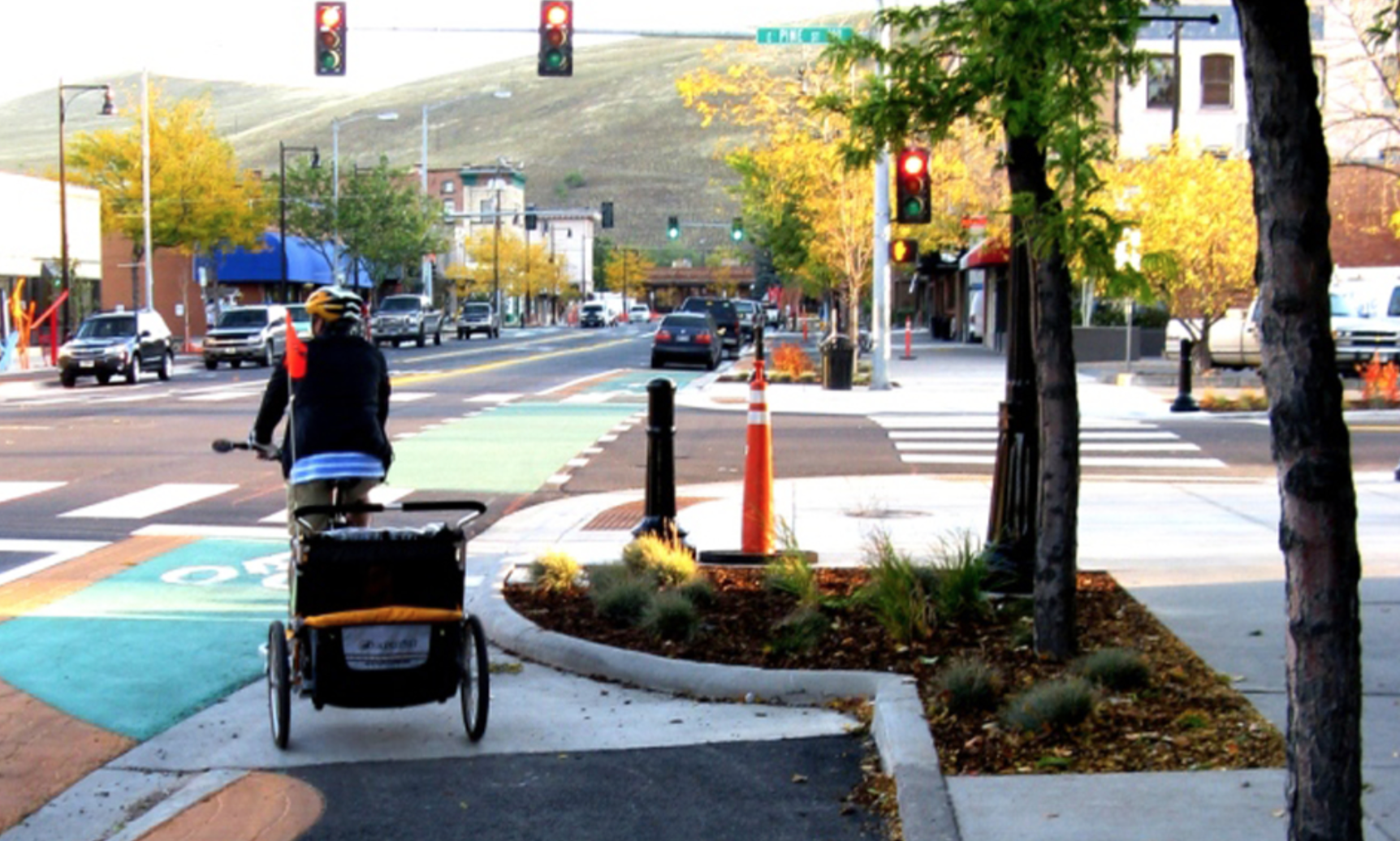2016 was a banner year for Complete Streets efforts across the country, according to a new report from Smart Growth America released in June. "More communities passed Complete Streets policies in 2016 than any previous year," notes the report, "and the policies passed in 2016 were also the strongest of all time."
But those new policies tended to come out of places that were whiter and wealthier than the national averages.
Across the country, the annual report from Smart Growth America that documents and evaluates Complete Streets policies passed within the last year, found that Complete Streets efforts tended to concentrate in whiter localities. Massachusetts and Washington state alone accounted for 65 percent of all the policies included in the analysis. The report also found that the jurisdictions passing these policies tended to be wealthier. "The median income of communities that passed or updated a policy in 2016 was $59,347," the report reads, "about 10 percent above the national average of $53,889."
This is at odds with research that shows that people of color and low-income communities tend to bear the brunt of pedestrian involved traffic fatalities. In a 2014 analysis, for example, Governing magazine found that, "In the nation’s metro areas, the bottom third of Census tracts, in terms of per capita income, recorded pedestrian fatality rates twice that of higher income tracts.
Smart Growth America's own 2016 "Dangerous by Design" report concluded that "non-white individuals account for 34.9 percent of the national population but make up 46.1 percent of pedestrian deaths."
Houston's Complete Streets
Meanwhile in the Houston metro area, traffic fatalities are a growing concern across the region. According a report from the Houston-Galveston Area Council, the number of crashes involving bicyclists, as well as those involving pedestrians increased 34 percent and 46 percent respectively between 2015 and 2016. Many of these crashes are occurring at intersections with signage, according to a Kinder Institute analysis, suggesting more needs to be done.
Houston issued its Complete Streets executive order in 2013, with input from Smart Growth America, which instructed the city's public works and engineering department to consider the needs of pedestrians and bicyclists but didn't mandate any specific design changes. More recently, the city approved the Houston Bike Plan, the first update to the plan since 1993, but did not identify specific funding sources for the plan.
In the city's 2016 annual progress report following the 2013 order, it noted that several new studies were underway, including several in partnership with H-GAC on livable centers around the city. Metro, meanwhile, also conducted a study on transit-oriented development. And the city approved a $4 million contract in December 2016 with the local bike share program for an expansion.
The Houston Police Department also announced in March that it would step up enforcement of a safe passing ordinance, that requires passing cars to leave at least 3 feet between the vehicle and vulnerable road users, including bicyclists.
During his second annual address on the state of Houston's mobility, Mayor Sylvester Turner touted the city's Walkable Places project, but noted, "our development regulations favor a 'suburban' style of development, with rigid parking and landscaping requirements and buildings set back from the street."
Turner said he's asked the planning commission to review these regulations. "We need regulations that are sensitive to local context and enhance walkability in high density, mixed use areas where people can live, work and play in the same vicinity," said Turner.

